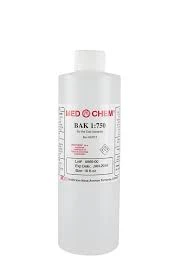coagulant flocculant
Understanding Coagulants and Flocculants Key Players in Water Treatment
Water treatment is an essential process that helps to ensure safe drinking water and the effective management of wastewater. Among the various agents employed in these processes, coagulants and flocculants stand out as vital components in enhancing the clarity and quality of water. While they are often used interchangeably, they serve distinct purposes in the treatment process.
Coagulants Initiating the Cleaning Process
Coagulants are substances that facilitate the agglomeration of particles in water. Their primary role is to destabilize the colloidal particles suspended in water, which are often too small to settle on their own. This destabilization is typically achieved by neutralizing the charge on these particles, allowing them to clump together and form larger aggregates, or flocs. Common coagulants include aluminum sulfate, ferric chloride, and polyaluminum chloride.
The process begins when the coagulant is added to the water, where it reacts with the contaminants. This reaction leads to the formation of microflocs, which then aggregate to form larger flocs. The speed and effectiveness of this coagulation process depend on various factors, including pH, temperature, and the dosage of the coagulant.
Flocculants Enhancing Floc Formation
Once the coagulants have settled the smaller particles, flocculants are introduced to improve the efficiency of the process. Flocculants are polymers that work by bridging the gaps between the flocs, encouraging them to bind together more firmly and form larger aggregates that can easily be removed from the water. They play a crucial role in improving the settling rates of these flocs and increasing the overall efficiency of the water treatment process.
coagulant flocculant

Flocculants can be anionic, cationic, or nonionic, depending on their charge. The selection of a suitable flocculant is essential, as it must effectively interact with the specific types of particles present in the water. Proper dosage and mixing are critical to ensure optimal performance, as overdosing can lead to the reverse effect, causing excess fluffiness and decreased settling rates.
Applications in Water Treatment
Together, coagulants and flocculants are employed in various water treatment applications, including drinking water purification, wastewater treatment, and even in industrial processes. In drinking water treatment, these agents play a crucial role in removing turbidity, microorganisms, and organic pollutants, ensuring that the water meets safety standards.
In wastewater treatment, the combination of coagulants and flocculants helps to remove suspended solids and contaminants effectively, enabling the safe release of treated water back into the environment. Furthermore, industries such as mining, paper manufacturing, and food processing utilize these agents to separate solids from liquids, enhancing product recovery and minimizing waste.
Conclusion
In summary, coagulants and flocculants are indispensable tools in the water treatment process. Their ability to improve the removal of suspended solids and enhance water clarity makes them critical for ensuring the delivery of clean and safe water. Understanding their unique roles and proper application can lead to more effective and sustainable water treatment practices, benefitting both human health and the environment.
-
Pbtc Scale InhibitorPBTC: A Scale Protector for Industrial Water TreatmentNewsAug.05,2025
-
Organic Phosphonate: An Efficient Defender in the Field of Scale InhibitionNewsAug.05,2025
-
Hydrolyzed Polymaleic Anhydride: Green Pioneer in Scale Inhibition FieldNewsAug.05,2025
-
PAPEMP Polyamino Polyether Methylene Phosphonic Acid For SaleNewsAug.05,2025
-
Flocculant Water Treatment: A Pioneer in Purification in the Field of Water TreatmentNewsAug.05,2025
-
Benzyl Isothiazolinone: An Efficient and Broad-Spectrum Antibacterial Protective GuardNewsAug.05,2025





